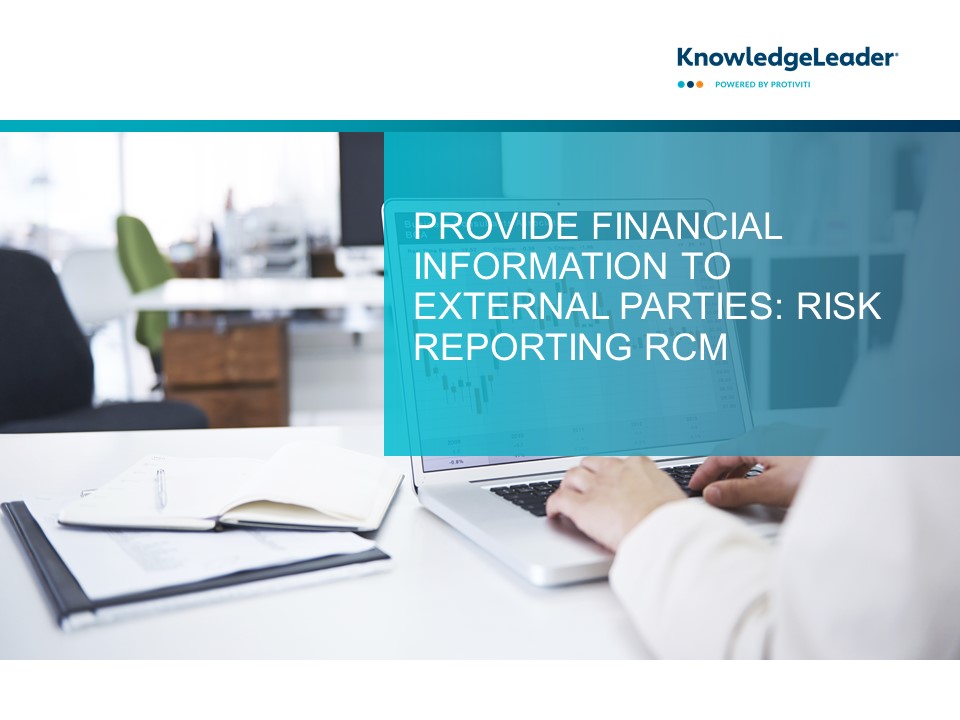Provide Financial Information to External Parties: Risk Reporting RCM

A successful risk management strategy requires a strong internal control environment. The risk control matrix (RCM) format emphasizes that strong and risk-oriented internal control environments are often optimized with automated/manual controls, depending on the situation.
An RCM provides an overview of different control objectives that organizations should take into consideration and the corresponding controls to safeguard the company against risks which may arise if not checked timely. Once customized to an organization, this document can help the user in assessing each control. The control assessment can then also be summarized to develop an action plan.
This document outlines risks and controls common to the risk reporting aspect of the 5.3.2. Provide Financial Information to External Parties process in a risk control matrix (RCM) format.
Sample risks include:
- Aggregation and reporting of fixed asset balances, depreciation, and amortization may not be accurate or properly classified.
- Aggregation of footnote disclosure information may not be accurate or properly classified.
- Asset tracking, performance, useful life, asset residual fair value estimates, and depreciation and amortization assumptions may change over the asset’s useful life and not be recorded or recognized.
- Computations for depreciation and amortization for GAAP and tax purposes may not be accurate.
- Financial statement footnotes may not appropriately describe required footnote disclosures.
This document can be used as a sample RCM and is not meant to be an exhaustive list of risks and controls. The KnowledgeLeader team will periodically update this RCM with new content. Organizations should select, update and modify the risks and controls included in this document to ensure that it reflects business operations.